FEATURED STORY
The Mangrove Breakthrough: a call to action for a critical ecosystem 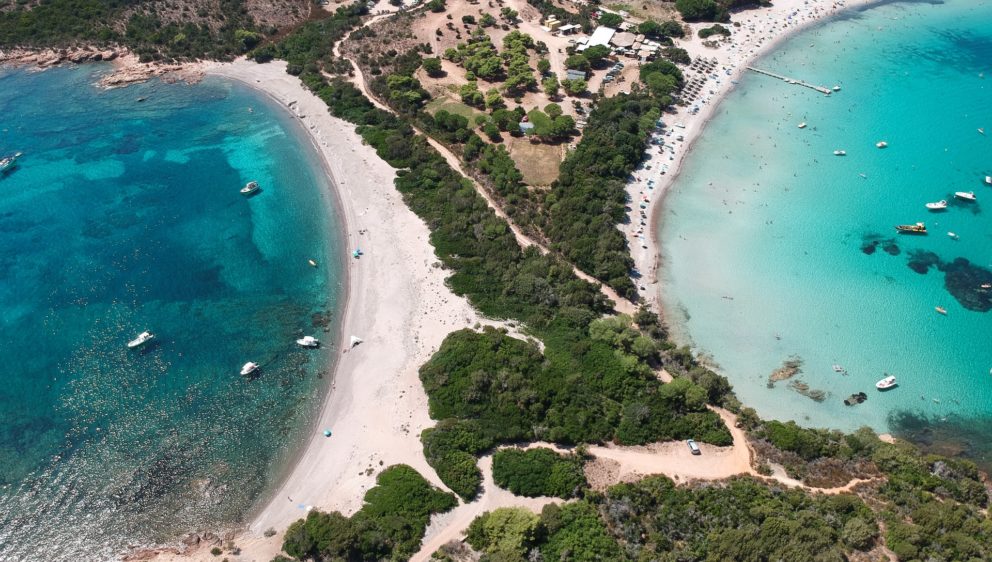 GLOBAL – The Global Mangrove Alliance (GMA) in collaboration with the UN Climate Change High-level Champions have identified the need for a unified global approach towards mangrove conservation and are therefore calling for signatories to the “Mangrove Breakthrough” being launched today at COP27. The Mangrove Breakthrough is a science-based, measurable, and achievable goal for non-state actors and governments to collectively restore and protect mangroves at the scale needed to secure the future of these vital coastal forests. This will be achieved by catalyzing financial flows to broadly activate proven solutions and mobilize action on the ground as part of the Sharm El Sheikh Adaptation Agenda—a key roadmap to deliver on the Race to Resilience. Specifically, the Mangrove Breakthrough aims to secure the future of 15 million hectares of mangroves globally by 2030. Current signatories to the breakthrough include Global Mangrove Alliance members, the Ocean Risk and Resilience Action Alliance (ORRAA), and Salesforce, among many others. By joining the Mangrove Breakthrough, signatories recognize the need and show a willingness to achieve a future where these critical ecosystems are restored and protected. The Breakthrough will channel finance at scale to ensure funding for both global and local initiatives aimed at protecting and restoring these coastal forests. “As we work together to scale up financial contributions for mangrove action through the Mangrove Breakthrough, it will be equally critical that we underpin these investments with scientifically robust restoration best practices and safeguards,” said Stewart Maginnis, Deputy Director of IUCN. READ MORE GLOBAL Among the mangroves, Biden cultivates diplomacy

GLOBAL – President Joe Biden capped off a consequential week of meetings with his foreign counterparts abroad – in which discussions centered on Russia’s ongoing war in Ukraine, climate change’s existential threat to the Earth and a pandemic that has unleashed food, energy and economic crises across the globe – with a final symbolic gesture in Bali. He planted a mangrove tree. The mangrove tree represents strength, resilience and stability in the face of adversity. So it appeared fitting that in the final hours before boarding Air Force One to return home, the president – surrounded by the leaders of some the United States’ most important allies – helped lower mangrove tree saplings into the earth. READ MORE AFRICA Senegal oyster growers fend off rising seas with mangroves
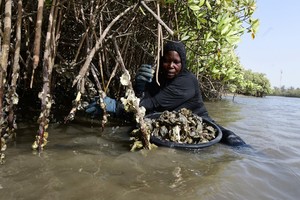
SENEGAL – WAIST-DEEP in brown water, Maria Ndong inspects a cord with rugged oysters clinging to it just below the surface. She raises a knife and cuts the string, slick with algae, measuring her catch before flinging it onto the deck of a nearby boat. As recently as a decade ago, the oysters would have been stuck to the roots of the dense mangroves that cover this corner of southern Senegal’s roughly 5,000-sq-km Saloum Delta. Then, Ndong and the other women of her village, Dassilame Serere, would have cut the tree itself to harvest the mollusks that are their livelihood. But three years ago, Ndong and her fellow villagers began replanting the mangroves, which were overexploited for decades by villagers seeking firewood, farmland or oysters, and have been battered by rising seas caused by climate change. The mucky, tangled forests of the West African coast absorb and blunt storms, nurture a diverse range of life — including young fish, crabs and shorebirds — and store vast amounts of carbon in their root systems. For the villagers of Dassilame Serere, the mangroves offer protection against the rising tide and the crashing waves that eat away at Senegal’s coastline. “Without the mangroves, the animals would disappear, and so would we,” says Ndong, 40. READ MORE Rising Sea Levels Besieging Africa’s Booming Coastal Cities
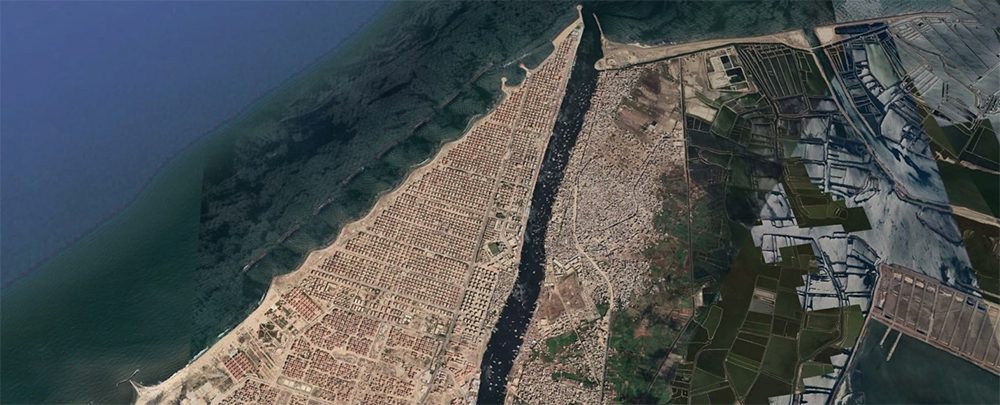
AFRICAN COAST – Africa’s coastal cities are facing converging crises—rising seas, rapidly growing populations, land pressure, and an affordable housing shortage. These crises are compounding one another as people are pushed to settle farther into the wetlands and shorelines surrounding cities, exposing these settlements to storm surges and flooding while weakening the protection these natural barriers and ecosystems provide the entire city. Mitigating the effects of rising seas, therefore, will require simultaneously addressing other sources of vulnerability (such as balancing between high-end developments that displace residents and affordable housing options). The Global Center on Adaptation has implemented rapid climate risk assessments (RCRA) in five cities, including the coastal cities of Bizerte (Tunisia), Conakry (Guinea), and Libreville (Gabon). Some of the most cost-effective measures for reducing loss and damages from extreme weather events generated from these RCRA’s include investing in water and sanitation infrastructure, restoring wetlands and ecosystems to reduce flood risks, and strengthening disaster evacuation planning. Instead of investing in expensive and maintenance-heavy infrastructure projects to defend against storm surges, many African coastal cities might choose the nature-based solution of restoring mangroves, dunes, seagrasses, wetlands, and other costal ecosystems. READ MORE East Africa should promote renewable energy, not oil pipelines

TANZANIA – On October 18, 2022, Ugandan President H.E. Yoweri Kaguta Museveni delivered a keynote address during African Energy Week which took place in Cape Town, South Africa between October 18 and 21. During his address, President Museveni discussed the September 14, 2022 European Parliament resolution that urged TotalEnergies to stop development of the East African Crude Oil Pipeline (EACOP) project for a year while studying an alternative route that is less environmentally- and socially-destructive. The EACOP is a planned 1,443 km pipeline that is expected to be built between oil fields in western Uganda to the port of Tanga in Tanzania. At peak production, the pipeline is expected to transport 216,000 barrels of crude oil per day. Construction of the pipeline is yet to commence. Independent calculations done by scientists from Environmental Law Alliance Worldwide-USA showed that the end-user or product use emissions (Scope 3) of the EACOP are over 34.3 million metric tons of carbon per year at peak production. This is equivalent to emissions from nine coal fired power plants. READ MORE Seychelles to Protect 100 Percent of Mangroves and Seagrass in 2023, Says President At COP27
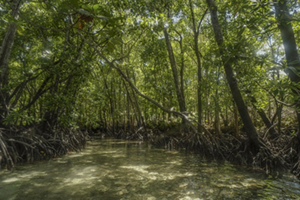
SEYCHELLES – Seychelles will move to 100 percent protection of all its mangroves and seagrass meadows in 2023, adding to the already 32 percent protection of its ocean and 50 percent of its forest, President Wavel Ramkalawan said on Monday. Ramkalawan made the announcement in his statement at the high-level segment for heads of state and government in the 27th Conference of the Parties (COP27) taking place in Sharm el-Sheikh, Egypt. “Like other islands, we contribute less to the destruction of the planet, yet we suffer the most. For example, the carbon emissions of Seychelles are very low, and we clean up through our mangroves and seagrass meadows, thus making us a zero contributor to the destruction of the planet, yet our islands are disappearing and our coasts are being destroyed,” he said. Seychelles has one of the most biologically diverse marine ecosystems on the planet while the carbon ecosystems cover over two million hectares, with seagrass beds accounting for 99 percent of the blue carbon extent. The other carbon ecosystem in the island nation is mangrove forests with more than 80 percent located within the Aldabra atoll. READ MORE AMERICAS Jamaica’s Mangroves Worth Millions

JAMAICA – Mangroves, the groups of trees and shrubs that line Jamaica’s coastlines, hold significant value not only in protecting and sustaining the lives and livelihoods of citizens along the coasts but also in real economic terms. It is estimated that these wetland forests are worth hundreds of millions of dollars. A report on Jamaica’s mangroves, launched in 2019, estimate that they provide approximately US$32.7 million in protection to Jamaica’s heavily settled coastline areas. The study, funded by the Program on Forests (PROFOR) through the World Bank, found that without mangroves, the estimated damage from flooding would be US$169 million annually. When the protection of approximately US$2.4 billion in assets (people and infrastructure) during storms is factored in, the value of mangroves is more than US$186 million per hectare. Director for the Centre of Marine Sciences at the University of the West Indies (UWI) Mona Campus, Professor Mona Kay Webber, tells JIS News that the value of mangroves is directly related to what they protect. READ MORE ASIA Certain mangrove species may disappear from India’s east & west coasts

INDIA – According to a study based on a prediction model, certain mangrove species in Chilika and Sundarbans on India’s east coast and Dwarka and Porbandar on India’s west coast are likely to decline and shift landward by 2070 due to declines in suitable habitats in response to precipitation and sea level changes. The study can help identify highly suitable areas for conservation and management, as well as develop future conservation strategies. Mangroves provide numerous ecosystem services and aid in the reduction of coastal ecological risks, but they are one of the most critically endangered ecosystems, declining rapidly as a result of climate change, sea level fluctuations, and human activity. Many conservation initiatives along the Indian coastline have failed due to a lack of understanding of mangrove spatial distribution and species habitat requirements. This highlights the critical need for model-based studies to identify conservation target areas at Spatio-temporal scales, particularly along the Indian coastline’s rich mangrove biodiversity. READ MORE OCEANA Goals for mangrove recovery must be based on science

AUSTRALIA – A rapid scale up in mangrove restoration is required if the Australian Government hopes to reach the goals of a recently announced partnership with the Mangrove Alliance for Climate. “This week at COP27 the Australian Government announced that it will join the Mangrove Alliance for Climate, along with United Arab Emirates and Indonesia, who have goals of a global 20% increase in mangrove habitat by 2030,” said Associate Professor Chris Brown from the Australian Rivers Institute and the Coastal and Marine Research Centre and a lead researcher with the Global Wetlands Program. “Conservation targets need to be both ambitious, so that they inspire the urgent actions that life on earth needs, and also scientifically credible, so that that action is tangible and achievable. Unfortunately, the 20 per cent target lacks the latter, it has no scientific basis.” The government’s Mangrove Alliance for Climate 20% target of mangrove restoration seems to be based on the initial target of the Global Mangrove Alliance, an alternate collaboration NGOs, governments, scientists, industry, local communities, and funders. READ MORE
Like this newsletter?
 Pease consider donating to MAP to keep it going.
Giving could never be easier  *Articles in this newsletter may mention practices being used and/or show exagerated results being claimed without proof. Stories are presented here in effort to show mangrove related activity around the world and do not necessarily reflect Mangrove Action Project’s views or mangrove restoration best-practices. | NOTICE 
Mangrove Macrobenthos Managament Conference MMM6 Colombia 2023
On behalf of the Organizing Committee of the MMM6, we want to announce that MMM6 organizers are working to hold the conference in the last week of July 2023 in Cartagena de Indias. We hope to make the official launch very soon. We invite you to follow them on twitter @MeetingMmm6
ACTION ALERTS DON’T LET THE PACIFIC ISLANDS SINK!Climate change is drowning the Pacific Islands. Join the urgent call from the Prime Minister of Tuvalu and sign with your email address: CLICK HERE Do not sacrifice Congo’s rainforests to the oil industry! TAKE ACTION TAKE MAP SURVEY Please see the survey questionnaire we at MAP put together to discover where the shrimp industry is still having major adverse effects on mangroves and local communities.
TAKE THE SURVEY Stop the Dredging – 6.7 million cubic meters of sand from the Addu atoll basin will destroy nature, biodiversity and the natural defences and resilience of this UNESCO Biosphere Reserve. SIGN THE PETITION Keep fossil fuels out of Bangladesh for the health and wellbeing of the local communities, the beautiful regional beaches and forests, the Bangladeshi economy, and our shared climate. SIGN PETITION Stop this total madness Stop the biggest heated oil pipeline in the world — right through the heart of Africa!
CLICK HERE
Like this newsletter? Pease consider donating to MAP to keep it going. Giving could never be easier 
MAP Website en Español
haga clic aqui 13 Year old Linda Li “Mangrove Adventure” from Kid Dream Art School

WATCH NOW 
Restoring The Natural Mangrove Forest
Watch movie

Community Based Ecological Mangrove Restoration in Rufiji Delta VIEW VIDEO
Video: Mangroves for the Future
View Here WANT TO GET INVOLVED?
Follow and Join MAP!    
Like this newsletter? Pease consider donating to MAP to keep it going. Giving could never be easier 

Interested in connecting or working with MAP? Check out our opportunities here 
MANGROVE ISSUES Want to learn more about mangroves?
Our short presentation will give you a better understanding of the issues we are working to solve. WATCH PRESENTATION What is CBEMR? Download MAP’s 2 page CBEMR Information Sheet containing links to all MAP’s CBEMR resources – CLICK HERE View MAP’s uploaded Videos at
MAP Video Gallery Question Your Shrimp Consumer/Markets Campaign!
WATCH VIDEO Mangroves: Guidebook to Malaysia – Click Here SHARE MAP’S VISION
CLICK HERE to watch short introductory video. Together we can work “at the roots of the sea”. Our short documentary, Reducing the Risk of Disaster through Nature-Based Solutions : Mangroves 
NASA Study Maps the Roots of Global Mangrove Loss
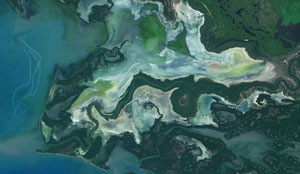
Marvellous Mangroves Curriculum The Marvellous Mangroves Curriculum begins with a simple philosophy – getting future generations to not only learn about, but understand the importance of mangrove forests. VISIT 
The award-winning Marvellous Mangroves (MM) curriculum educates children on the importance of mangroves and their ecological functions, teaching them about modern challenges and mechanisms for sustainability. VIEW VIDEO Marvellous Mangroves Curriculum in Bangladesh – WATCH VIDEO
MARVELLOUS MANGROVES IN BRAZIL
En Portuges 
Marvellous Mangroves – A Curriculum-Based Teachers Guide.
Like this newsletter? Pease consider donating to MAP to keep it going. Giving could never be easier 
“Question Your Shrimp” Campaign Question Your Shrimp – is it really sustainable? Sign the Petition
Note to Our Readers: We strive to keep active links in our newsletter. However, due to circumstances beyond our control, occasionally links to stories may become broken. If you find a link to a story is not functioning, please cut and paste the headline into your browser search bar. In most cases you should be able to locate the original story.
Not yet a MAP News subscriber?
Click here to subscribe. 
*Articles in this newsletter may mention practices being used and/or show exagerated results being claimed without proof. Stories are presented here in effort to show mangrove related activity around the world and do not necessarily reflect Mangrove Action Project’s views or mangrove restoration best-practices.
|


























